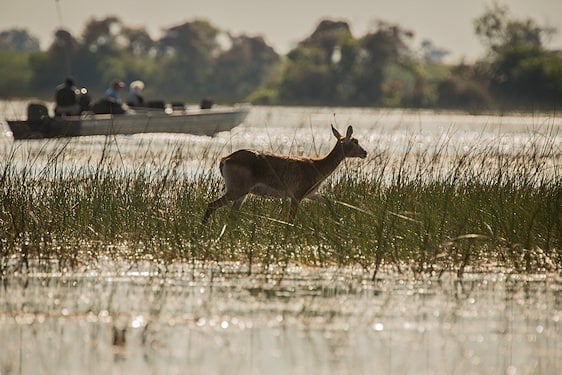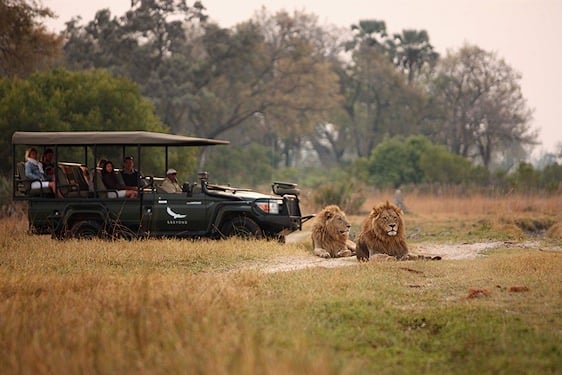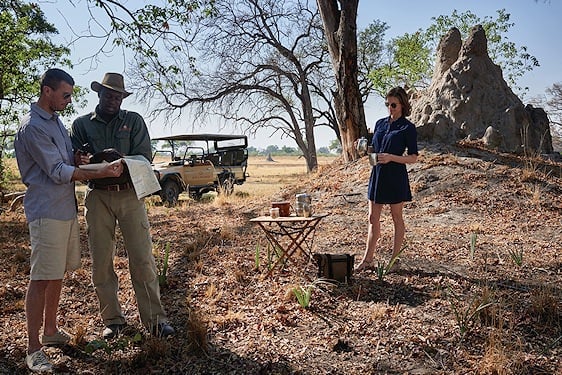Okavango Delta Travel and Vacations
Help Me Plan- Home
- >
- African Travel
- >
- Botswana
- >
- Okavango Delta
Okavango Delta Destination Guide
The Okavango Delta is one of Africa’s most breathtaking wilderness areas and Botswana’s top safari destination. This vast inland oasis of islands, channels, and floodplains supports abundant wildlife year-round. With mokoro safaris, game drives, and luxury tented camps, it offers an unmatched blend of water and land adventures in a pristine, remote setting.
Getting to the Okavango Delta
By Air: Daily scheduled flights are operated between Johannesburg and Maun, the gateway to the Okavango. These flights are just under an hour and a half in duration.
Upon reaching Maun, light charter flights bring guests to gravel airstrips close to the lodge where they will be staying.
Weather & Best Time to Visit
December to February are hot, wet months with daytime temperatures as high as 40 °C. Humidity levels fluctuate between 50% and 80%. From March to May, the temperatures become far more comfortable, with a maximum of 30 °C during the day and mild to cool evenings. The rain dries up quickly, leading into the dry, cooler winter months of June to August.
Daytime temperatures at this time of year are mild to warm, but the temperatures begin to fall after sunset. September to November see the heat and atmospheric pressure build up once more as the dry season slides into the rainy season. October is the most challenging month for visitors — daytime temperatures often push past 40 °C, and a sudden cloudburst only occasionally breaks the dryness.
It is best to visit the Okavango Delta between June and September. Having said this, each season in this ecosystem has its wonders to offer visitors.
Medical Considerations
Malaria is prevalent in the area, and it would be wise to consider anti-malarial prophylactics. If you take any chronic medication or require allergy medication from time to time, we recommend that you pack an ample supply of both, for there are no chemists or shops where these can be bought or supplemented.
Safety
Adhere to the rules and recommendations of your ranger as far as wildlife interactions are concerned to ensure a safe and hassle-free safari in Botswana's Okavango Delta.
Top Safari Activities in the Okavango Delta
One of the reasons the Okavango Delta is such a popular African safari destination is the wealth of safari activities available. These activities are enjoyed in one of the world's genuinely remote and untouched wilderness areas. Most of the camps in the Okavango are only accessible via light charter aircraft.
Water-based game viewing can consist of either motorized excursions on the lakes and channels of the Delta or game viewing from a mokoro. Relax as you are propelled through the Delta's shallow waters by a guide standing in the stern and pushing forward with a pole.
The most popular safari activity remains the traditional game drive in an open 4x4 vehicle, which provides visitors with an elevated vantage point over the vast stretches of the delta and the opportunity to spot wildlife from afar.
Walking safaris on the many islands in the Delta, accompanied by resident rangers and trackers, offer a wonderfully personal way of viewing the wildlife without the interference of artificial sound.
Okavango Delta Vacation Options & Travel Tips
Experience an unforgettable, one-of-a-kind safari getaway in the Okavango Delta while staying at exclusive and uniquely styled luxury lodges.

Tours, Safaris & Honeymoons
Browse our thoughtfully crafted safari tours.

Tailor-Made Vacation Packages
All our tours and safaris can be customized.

Travel Tips & Advice
Important information about visiting Southern Africa.
Recommended Safari Camps
We recommend these safari camps in the Okavango Delta for their unique settings, exceptional service, and unforgettable safari adventures.
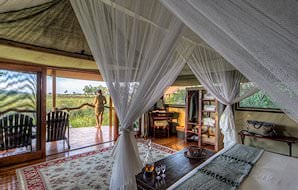
Kanana
A unique safari camp in the southwestern part of the Okavango Delta, Kanana overlooks the Xudum River.

Camp Xakanaxa
This authentic tented camp on the banks of Xakanaxa lagoon offers authentic safari accommodation in twelve guest units.
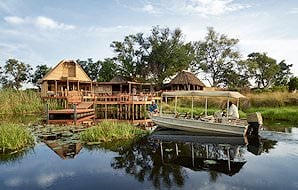
Baines Camp
Baines Camps' six luxurious suites on elevated wooden platforms overlook the Boro River on the edge of Moremi.
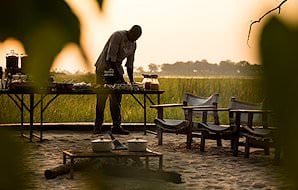
Abu Camp
Abu is one of Botswana's most luxurious safari camps in the heart of the Okavango Delta that offers an exclusive elephant safari experience.
Okavango Delta Travel Overview
The Okavango is a unique ecosystem of lagoons and channels that covers, on average, some 17 000 square kilometers. It is one of the world's largest inland deltas, once part of Lake Makgadikgadi, which dried up many years ago.
Surrounded by the arid Kalahari Desert, the Okavango is a lush oasis that attracts vast animal concentrations during the dry season. It is a natural spectacle that leaves a lasting impression on all fortunate enough to have witnessed its grandeur.
A maze of water channels
The magical ingredient of the Okavango Delta is found in its seasonal floodplains, when the dry land is sculpted by summer rainfall from the Angolan Highlands into a network of interwoven channels, attracting large herds of animals. The recommended time to visit the Delta is between May and August.
Exploring the waterways by mokoro offers the most natural and tranquil experience, allowing you to absorb the sights and sounds of this remarkable spectacle. A poler at the back of the mokoro — a traditional dugout canoe — uses a long pole to guide the vessel through the shallow waters and vegetation of the Okavango Delta. A mokoro ride offers an intimate encounter with the region’s wildlife, including red lechwe, sitatunga, hippo, crocodile, elephant, and more.
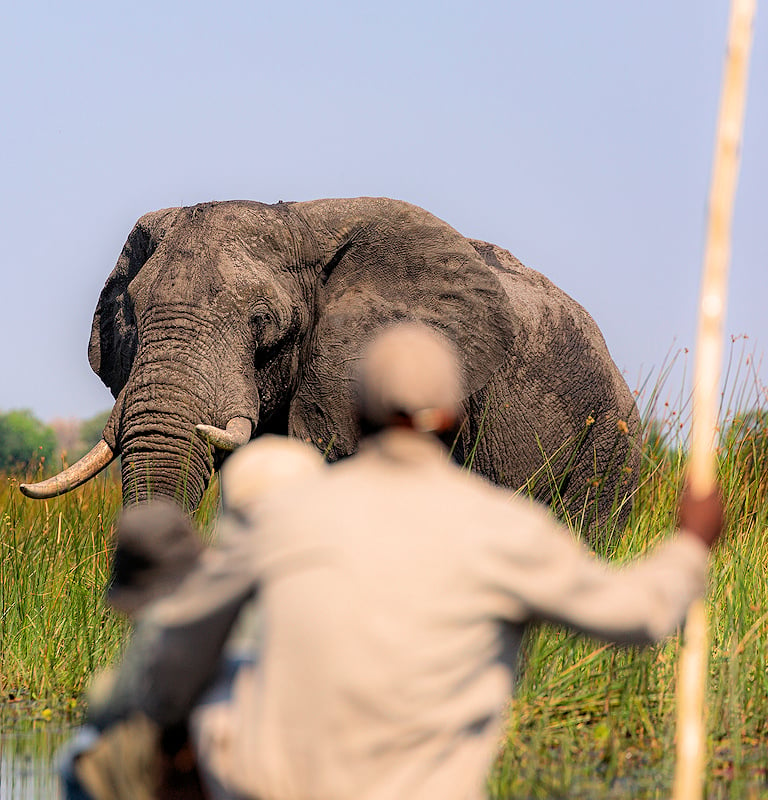
Foods To Try When Visiting the Okavango
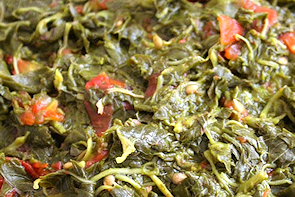
Morogo
Morogo is a type of spinach that forms an integral part of the diet of locals in Botswana. It is rich in vitamins and minerals and quite healthy. The plants grow wild and are harvested regularly.
Lerotse
Lerotse is a type of wild melon thought to have originated in Botswana. It has a distinctive taste and must be cooked before being eaten. Several local dishes use lerotse as an ingredient.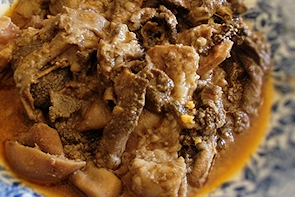
Tswii
Tswii is a vegetable that resembles a potato in many ways. It is usually cooked in a stew with beef or goat meat to enhance its flavor. It can also be cooked and enjoyed with butter and salt.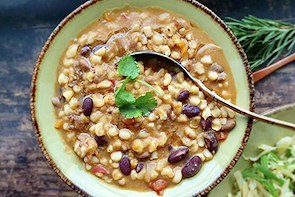
Dikgobe
Dikgobe is a dish created with beans, sorghum, and or maize. The ingredients are cooked together in salted water, adding animal fat or vegetable oil. It is traditionally served with meat or milk products.Okavango Delta FAQ
Yes. If you are comfortable flying in light aircraft, the Okavango is a wonderful introduction to safaris in Africa.
The elusive sitatunga, with its specially adapted hooves, is at home in swamp areas, though rarely spotted. The rarest carnivore spotted in the Okavango is the African wild dog.
Blissfully, this is one of the last parts of the world where one can relax without the constant need to be in contact.
Yes, Botswana's government has wisely restricted the use of concrete, cement, and brick in this sensitive ecological area. The camps are, however, still very luxurious with all modern amenities.
Yes, you may only carry a maximum weight of 20 kg. In addition, you should pack your luggage in soft canvas bags that can stow easily in light aircraft.
Towns or shops are far from the areas where the Okavango's camps are located. The last opportunity for last-minute shopping will be in Maun before your charter flight to the safari camp.
The basic rule of thumb is that longer is always better than shorter. If time and resources allow, consider a stay of four nights. It will mean three full days to enjoy the rich natural diversity of the Okavango Delta.
A handful of the Okavango's lodges can be reached overland, typically only in the dry season. If you fear flying in light aircraft, booking your safari in one of South Africa's private game reserves would be better served.
A lodge that offers both land- and water-based game viewing will better serve you. Generally speaking, the land-based game drives are much more productive regarding the variety and number of animals seen.
History
The Okavango Delta has not always been the reserve it is today. Towards the end of the 19th century, the animal population in the Southern Delta had been practically wiped out by the rinderpest epidemic. It took many years for numbers to recover, simply to come under new pressure from uncontrolled hunting and encroaching cattle farms.
Thanks in large part to the efforts of the wife of Chief Moremi III, the tribe agreed to set aside the area between the Khwai and Mogogelo Rivers as a wildlife reserve. On 15 March 1963, the reserve was officially proclaimed and named in honor of Chief Moremi. This reserve protects a large part of the Okavango and now covers an area of 4 872 square kilometers (1 856 sq miles).
Animal numbers have recovered very well, thanks in large part to the vision of these early conservationists and the commitment of the Botswana government to preserve its wilderness areas and animal life.
Terrain and Vegetation
The Delta is produced by seasonal flooding. The Okavango River drains the summer rainfall from the Angolan Highlands, and the surge flows 1 200 km in one month. The waters then spread over the delta's 250 km by 150 km area over the next four months.
The flood peaks during Botswana's dry winter months, when the delta swells to three times its permanent size — attracting animals from miles around and creating one of Africa's most significant concentrations of wildlife. The delta's profuse greenery is not the result of a tropical climate — it is rather like an oasis in an arid country.
Wildlife
The area is both a permanent and seasonal home to a wide variety of wildlife, which makes it a popular tourist attraction. The delta is known for its abundance of predator species, which include big cats like lion, leopard, and cheetah.
It is also home to one of the largest pack densities of the endangered African wild dog on the African continent. Both brown and spotted hyena occur. Herbivores range from behemoths like elephant, hippo, and Cape buffalo to large antelope and plains game species such as tsessebe, sitatunga, kudu, sable antelope, giraffe, and zebra.
The area is home to over 400 species of bird, including the African fish eagle, Pel's fishing owl, crested crane, lilac-breasted roller, hamerkop, ostrich, and sacred ibis. The most populous large mammal is the lechwe antelope, with more than 60 000 of these water-loving creatures gracing the wetlands. The lechwe is slightly larger than an impala, with elongated hooves and a water-repellent substance on its legs that enable rapid movement through knee-deep water. They graze on aquatic plants and take to water when threatened by predators.
Most of the estimated 200 000 large mammals in and around the delta are not year-round residents. They leave with the summer rains to find renewed fields of grass to graze on and trees to browse, then make their way back as winter approaches.
Activities
One of the reasons that the Okavango Delta is such a popular African safari destination is the wealth of safari activities available. Naturally, the most popular activity remains the traditional game drive in an open 4x4 vehicle, which provides visitors with an elevated vantage point over the vast delta and the opportunity to spot wildlife from afar. The alternative option of bush walks is the chance to get intimate with this unique wilderness area.
A safari activity that remains inherent to an Okavango Delta safari is a water-based game-viewing adventure from a mokoro. Relax as you are propelled through the delta's shallow waters by a guide standing in the stern and pushing forward with a pole. Mokoros are traditionally made by digging out the trunk of a large straight tree, such as an ebony or Kigelia tree. Modern mokoros, however, are increasingly made of fiberglass.

